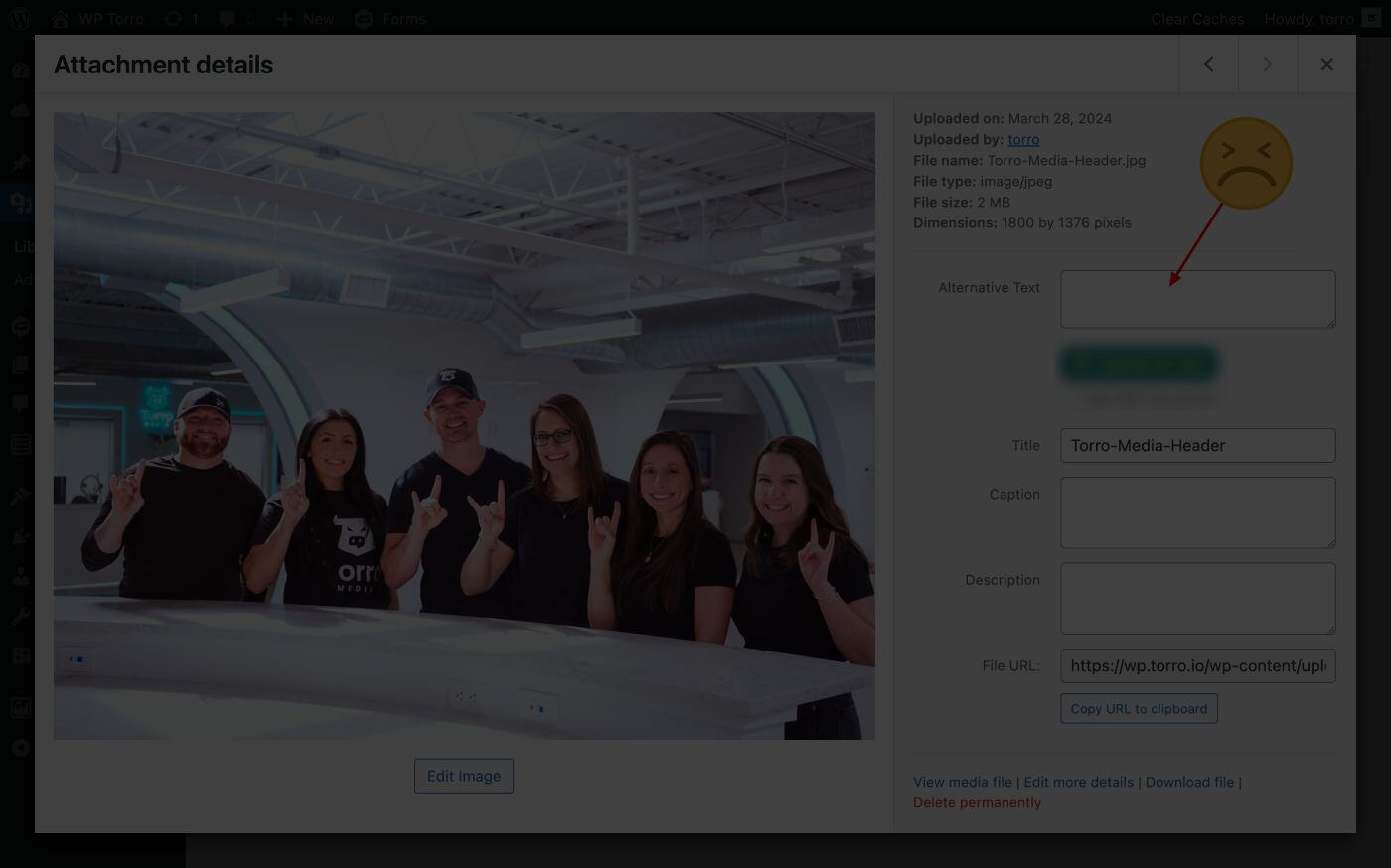The 2024 SEO Cheat Sheet: An Essential Resource for Web Developers
As a web developer, you already know that a well-designed website is crucial for success in today’s digital landscape. But did you know that SEO (Search Engine Optimization) plays a significant role in your website’s visibility and user experience? With the ever-evolving search engine algorithms, it’s vital to stay up-to-date with the latest SEO practices. In this blog post, we’ll cover essential on-page and off-page SEO elements, as well as technical SEO essentials, to help you optimize your website for better search engine performance and user experience. To make this process easier, we’ve created an SEO cheat sheet that you can refer to as you work on your site.
SEO Cheat Sheet Summary
| SEO Topic | Rules | Best Practice |
| Title Tag | 30 - 60 Characters Max | Include Keyword close to beginning |
| Meta Description | 120 - 156 Characters Max | Include Keyword close to beginning |
| Heading 1 Tag (H1) | Only 1 H1 Tag (per page) | Include Keyword close to beginning |
| Heading 2 Tag (H2) | Several H2 Tags (per page) | Include Keyword in 2-3 H2 Tags |
| Content Length | Minimum 1,000 words | Word count equal to or greater than Top 3 search results on Google |
| Readability | Make easy to read/scan | Green score | Use Yoast or RankMath to score this |
| Internal Linking | Link to 3-4 other pages (on your site) | 1 Link to a produce/service page. Include older pages too, not just new. |
| External Linking | Link to 1-2 other websites (not yours) | Websites you're not competing with |
| Images | Include 3-4 images | Compress images before loading |
| Alt Text | Include keywords in all images | Describe the photo. Do NOT force your keyword on images that aren't true. |
| Content Cannibalization | Do not use the exact same keyword from another page | If you're already using the keyword and it's not performing well, update that page and make it the canonical URL. |
| URL | Include Focus Keyword in URL | Make sure keyword is separated by dashes, like /focus-keyword-here. |
| Link to NEW Page from 3 other pages | 2-3 Links from other pages on site | Do this on every post and you'll have a great linking strategy for Google. |
Key Takeaways
- Optimize on-page SEO elements: title tags, meta descriptions and header tags for improved website visibility.
- Leverage high quality backlinks, social media and local SEO to increase website authority & rankings.
- Use popular tools like SEMrush or Ahrefs to audit, analyze & optimize websites for better performance.
Essential On-Page SEO Elements

On-page SEO significantly boosts your website’s visibility and user experience. Concentrating on key elements such as:
- Title tags
- Meta descriptions
- Header tags
- Content length
- Readability
Our team ensures your web pages, including service pages, are fine-tuned for search engine results pages (SERPs).
Title tags and meta descriptions are vital for improving click-through rates, while header tags, content length, and readability are crucial for keeping site visitors engaged and ensuring a positive user experience. Optimizing these on-page elements, including meta tags, sets the foundation for better search rankings and more website traffic.
Title Tags
Title tags, which appear on SERP listings directly above the page URL, hold significant importance in SEO. For effective title tags, include a relevant keyword and maintain a length of 50-60 characters.
Well-constructed title tags and meta descriptions can help increase conversions from results pages and even improve your website’s position on the first page of Google search results.
Meta Descriptions
Meta descriptions are concise summaries of a web page’s content that appear in search engine results. To craft compelling meta descriptions, follow these tips:
- Aim for a length of 160 characters
- Include a relevant keyword
- Include a clear call-to-action
- Avoid keyword stuffing
By following these guidelines, you can create a successful meta description that encourages users to visit your page.
Header Tags
Header tags (H1, H2, H3) are crucial in organizing content and making it easily readable for both users and search engines. They help define the hierarchy of information on your web page, guiding search engine crawlers to understand the main title (H1) and topics/subtopics (H2-H6).
Utilizing header tags can elevate the user experience and boost your site’s search engine performance.
Content Length
Producing high-quality, long-form content is paramount to offer value to your site visitors and delve deeper into your topic. Research suggests that SEO articles with a word count between 1,000 and 2,000 words tend to perform well in search engine rankings. However, it’s essential to prioritize quality over quantity when creating content, as longer content doesn’t always guarantee better results.
Readability
Ensuring that your content is easy to read and understand is crucial for optimizing user experience. To achieve optimal readability, you should:
- Avoid keyword stuffing
- Use short and simple words
- Employ short sentences
- Divide content into sections
- Include quotes
- Incorporate visuals
- Maintain a consistent writing style
- Measure content readability
Utilizing bullet points can also help organize information, highlight essential details, and increase readability and user experience.
Optimizing Internal Linking
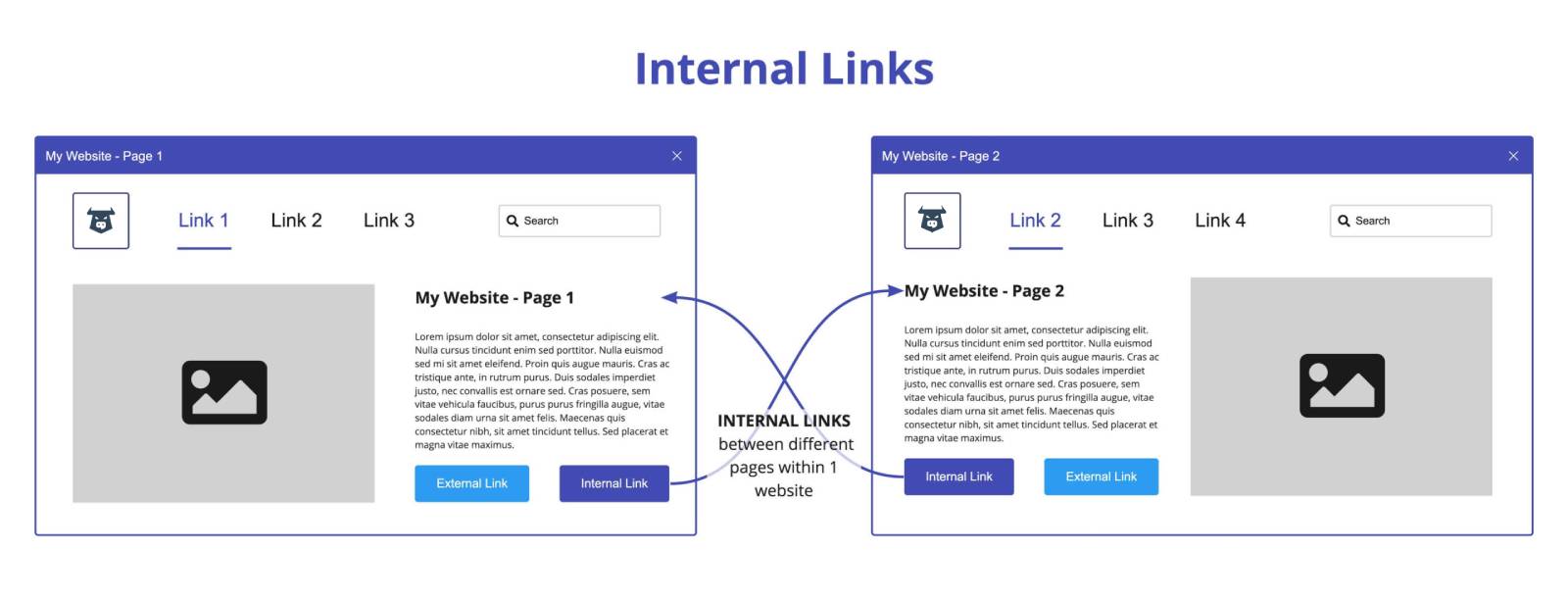
Internal linking is a key part of SEO, improving website navigation, user experience, and overall search engine optimization. A thoughtfully structured internal linking strategy can direct users to pertinent content, enhance crawlability, and evenly spread link equity throughout your site.
In addition to internal linking, external SEO linking is essential for building high-quality backlinks from authoritative sources. This not only improves your website’s authority but also positively impacts search engine rankings. By focusing on both internal and external linking strategies, you can maximize your website’s visibility and user experience.
Benefits of Internal Linking
Internal links play a crucial role in enhancing a website’s SEO performance. They help distribute link equity throughout your site, guiding users to relevant content and improving crawlability. Implementing a strategic internal linking plan guarantees:
- Easy navigation for search engine crawlers
- More efficient content indexing
- Higher search engine rankings
- Improved user experience
Strategies for Effective Internal Linking
To create an effective internal linking strategy, you should use descriptive anchor text, link to high-authority pages, and avoid over-optimization. Concentrating on these vital elements guarantees user-friendly and search engine-friendly internal links, thereby enhancing your website’s overall SEO performance.
External SEO Linking
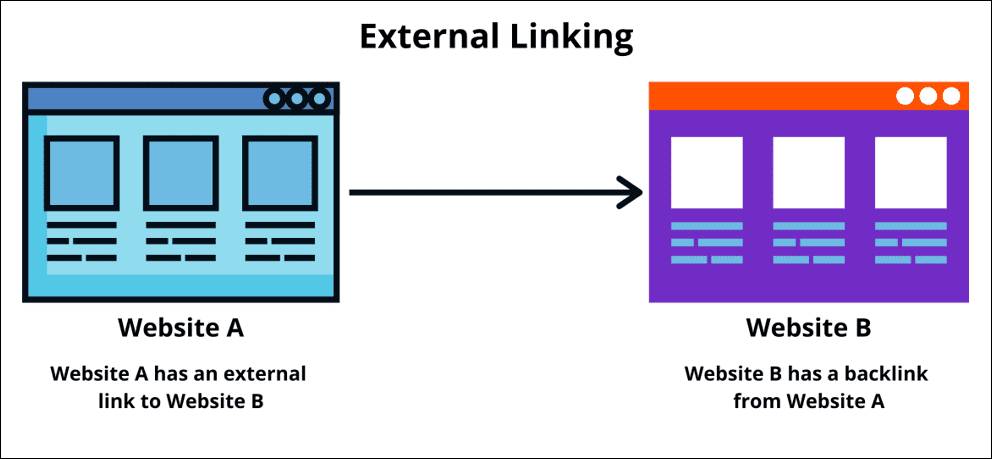
Building high-quality backlinks from authoritative sources is essential for improving your website’s authority and search engine rankings. By creating valuable, shareable content, you can attract natural backlinks that positively impact your site’s visibility in search engine results.
Additionally, using various link types and sourcing authoritative websites can help boost your website’s overall off-page SEO performance.
Image SEO Best Practices
Image optimization for SEO is imperative to maximize user benefits while minimizing impact on site performance. By using the right number of images, descriptive alt text, and proper file formats, you can improve your website’s search engine ranking and user experience.
Including a sufficient number of relevant images in your content has several benefits:
- It supports your content and makes it more visually appealing
- It enhances the user experience and keeps readers engaged
- It helps search engines understand the image content when you use descriptive alt text with target keywords
- It improves accessibility for users with visual impairments.
How many photos to use in an SEO article?
While there’s no set rule for the number of photos in an SEO article, a general guideline is to insert one photo after every 150 to 350 words. Striking the right balance between the number of images and user experience is crucial, as using too many images can negatively affect page loading speed, while too few may not provide enough visual support for your content.
Using Alt Text to Describe Images
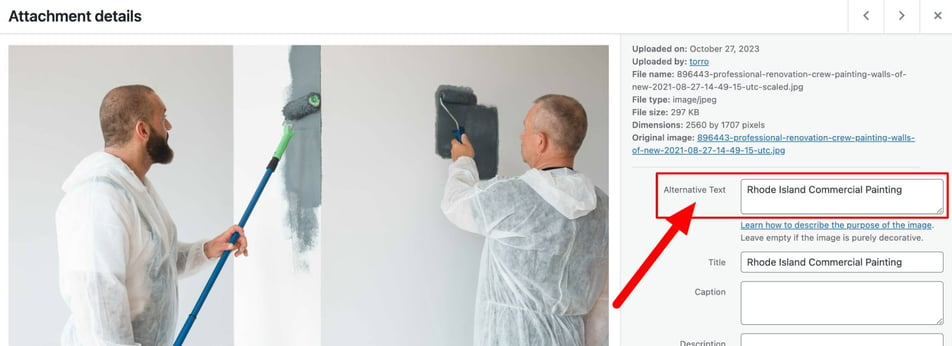
Including descriptive alt text with target keywords for your images is essential for SEO, as it helps search engines understand the content of the image and improves accessibility for visually impaired users. By providing accurate and descriptive alt text, you can boost the visibility and discoverability of your images in search engine results, ultimately improving your website’s overall SEO performance. If you're using Wordpress CMS, you'll be able to enter alt text like the example above from the Media Library.
Addressing Duplicate Content Issues
Duplicate content, or nearly identical information found on multiple webpages, can bewilder search engine crawlers and adversely affect your website’s SEO performance. It’s essential to identify and resolve duplicate content issues using canonical tags and proper URL structures to ensure that your website ranks well in search engine results.
By implementing the following strategies, you can avoid duplicate content penalties and improve your website’s search engine rankings:
- Use canonical tags to indicate the preferred version of a web page.
- Structure your URLs correctly, ensuring that each page has a unique and descriptive URL.
- Use SEO tools to detect duplicate content on your website and address it promptly to maintain optimal SEO performance.
By following these strategies, you can ensure that your website is optimized for search engines and provide a better user experience.
Identifying Duplicate Content
Several SEO tools that can assist in identifying duplicate content on your website include:
- Screaming Frog
- Copyscape
- Plagspotter
- Google Search Console
- Siteliner
These tools can identify exact duplicate pages, near duplicates, and even content that has been replicated across the web.
By addressing duplicate content issues, you can ensure that your website maintains optimal SEO performance and ranks well in search engine results.
Canonical Tags
Canonical tags are HTML elements that can be added to the head of a webpage with duplicate content, indicating to search engines which version of the content is the original, definitive version. By implementing canonical tags, you can avoid duplicate content penalties and improve your website’s search engine rankings. To use canonical tags effectively, it’s important to apply them to all duplicate pages and use absolute URLs.
URL Structures
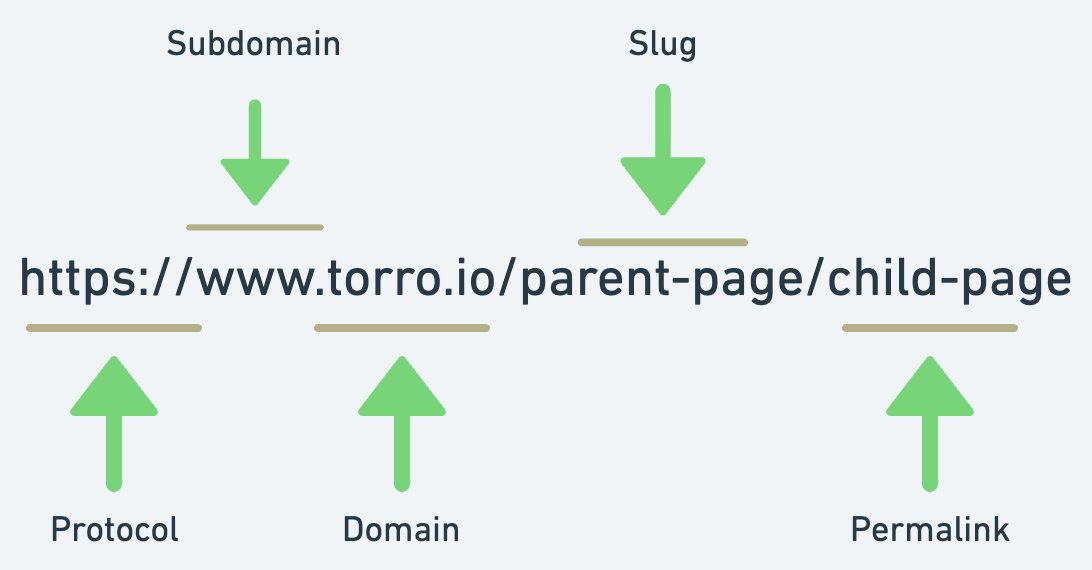
Creating clean, descriptive, and keyword-rich URLs is essential for improving user experience and search engine rankings. By ensuring that your URLs are structured correctly, you can make it easier for search engine crawlers to understand and index your content.
Additionally, including relevant keywords in your URLs can provide more context and relevance to search engines, increasing the likelihood of your pages appearing in relevant search results.
Off-Page SEO Considerations
Off-page SEO involves optimization strategies implemented outside your website, such as:
- Industry-related websites
- Blogs
- Social media
- User forums
By focusing on off-page SEO factors such as backlinks, social media, and local SEO, you can improve your website’s authority and visibility in search engine results.
Earning high-quality backlinks from authoritative sources is crucial for off-page SEO, as it can improve your website’s authority and positively impact search engine rankings. Similarly, leveraging social media platforms can help you promote your content, engage with users, and build brand awareness, ultimately driving more traffic to your website. Local SEO is another essential aspect of off-page SEO, as optimizing your website for local search results can attract local customers and improve your online visibility.
Backlinks
High-quality backlinks from authoritative sources play a crucial role in improving your website’s authority and search engine rankings. To earn these valuable backlinks, focus on creating valuable, shareable content that naturally attracts links from reputable websites.
By building a strong backlink profile, you can enhance your website’s visibility in search engine results and drive more organic traffic to your site.
Social Media
Leveraging social media platforms such as:
- YouTube
can significantly impact your SEO performance. By promoting your content on social media, you can engage with users, build brand awareness, and drive more traffic to your website.
Additionally, social media can help you identify your target audience and conduct keyword research for your SEO content, further improving your website’s search engine rankings.
Local SEO
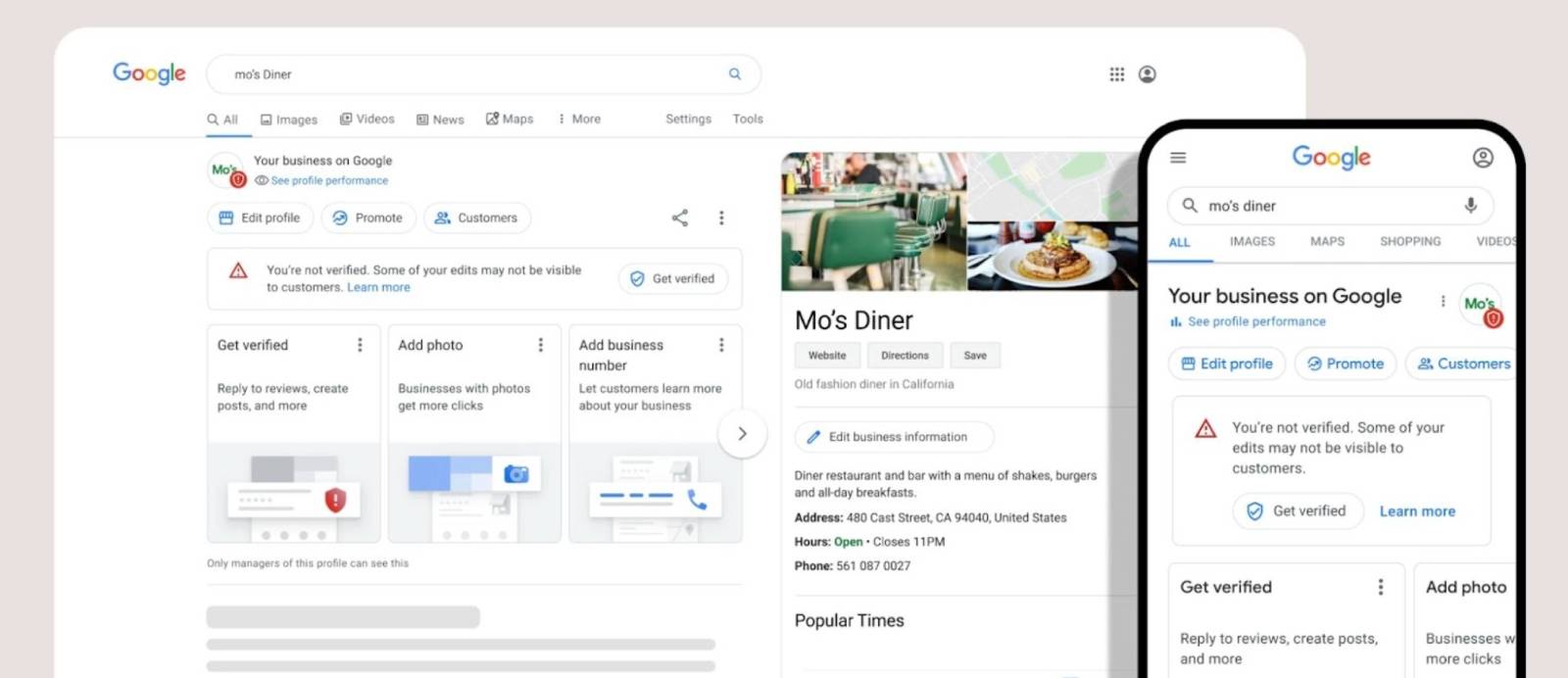
Local SEO is an off-page SEO strategy that focuses on optimizing your online presence to drive local traffic, visibility, and brand recognition. By optimizing your website for local search results, you can connect with your local audience and outshine your competition. Some essential components of local SEO include:
- Optimizing your website and content to match user intent
- Having a properly optimized Google My Business profile
- Engaging on social media
- Conducting keyword research
- Improving search visibility, traffic, and brand awareness for local businesses.
Popular SEO Tools for Web Developers
Renowned SEO tools such as SEMrush, Ahrefs, and Google Search Console assist web developers in auditing, analyzing, and optimizing their websites to enhance search engine performance. These tools provide comprehensive insights into website performance in search engine results and offer optimization tools for improved search engine performance, without resorting to any SEO cheat tactics.
By leveraging these popular SEO tools, a web developer can enhance their website’s visibility, traffic, and user experience.
Technical SEO Essentials
Attention to technical SEO aspects like site speed, mobile-friendly design, and structured data is key to enhancing website performance and user experience. By optimizing your website’s technical aspects, you can ensure that search engine crawlers can efficiently navigate and index your content, leading to better search engine rankings and increased website traffic.
Site speed plays a significant role in user experience, as slow-loading pages can lead to high bounce rates and decreased user satisfaction. To optimize site speed, consider reducing page load time, compressing images, and using caching techniques. Additionally, ensuring that your website is responsive and optimized for mobile devices is crucial, as an increasing number of users now access websites through their smartphones and tablets.
Applying structured data markup using Schema can enrich search results with detailed snippets, boosting click-through rates and overall website performance.
Site Speed
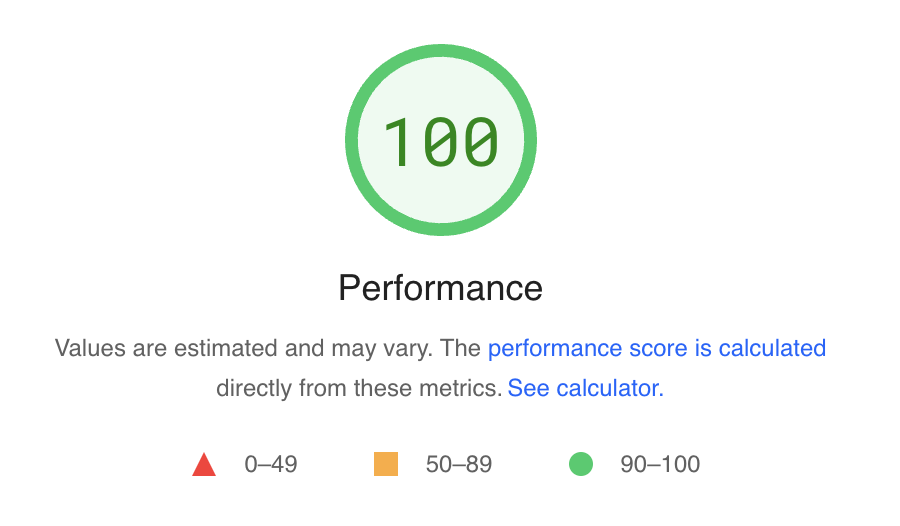
Optimizing site speed is crucial for enhancing user experience and website performance. By reducing page load time, compressing images, and using caching techniques, you can improve your website’s loading speed and ensure that users have a positive experience when browsing your site.
Faster-loading websites are more likely to rank higher in search engine results, leading to increased visibility and website traffic.
Mobile-Friendly Design
Given the increasing number of mobile users, it’s crucial that your website is responsive and optimized for mobile devices. A mobile-friendly design not only caters to the needs of mobile users but also positively impacts your website’s search engine rankings.
By implementing a mobile-friendly design, you can provide a seamless user experience across different devices and improve your website’s overall SEO performance.
Structured Data
Implementing structured data markup using Schema can significantly enhance your search results with rich snippets, leading to improved click-through rates and better overall website performance. Structured data provides additional context and information about your webpage content to search engines, allowing them to better understand and categorize your content.
By incorporating structured data markup in your website, you can improve your site’s search engine visibility and attract more organic traffic.
Summary
In conclusion, optimizing your website for both on-page and off-page SEO factors, as well as focusing on technical SEO essentials, is crucial for improving your website’s visibility and user experience. By implementing effective SEO strategies such as optimizing title tags, meta descriptions, internal linking, image SEO, addressing duplicate content issues, and leveraging social media, you can enhance your website’s search engine performance and drive more organic traffic. Remember that SEO is an ongoing process, and staying up-to-date with the latest trends and best practices will ensure your website remains competitive in the ever-evolving digital landscape.
Frequently Asked Questions
What is a cheat sheet for SEO?
A SEO cheat sheet is a concise summary of essential on-page SEO practices that help search engines to read and index your website. Utilizing the guide makes it easier for web and SEO developers to improve site performance and user experience.
How do I use a SEO checklist?
Follow a professional SEO checklist to improve your website's SEO. This includes conducting keyword research and optimization, ensuring content quality and relevance, crafting title tags and meta descriptions, utilizing header tags, optimizing keyword density and placement, establishing SEO-friendly URL structure and site architecture, marking up subheadings with header tags, including target keywords in the body content, and optimizing visuals with alt-text.
How do I do simple SEO?
To do simple SEO, target people looking for you, do keyword research and use relevant terms in your page title, URL, meta description, H1 text, and content. Additionally, hyperlink existing content, optimize images, build links to your website, and monitor your rank for the best results.
What are the most important on-page SEO elements to focus on?
Title tags, meta descriptions, header tags, content length, and readability are the most essential on-page SEO elements to prioritize.
What are some best practices for optimizing images for SEO?
Optimize images for SEO by using the correct number of images, including descriptive alt text, and utilizing proper file formats.


